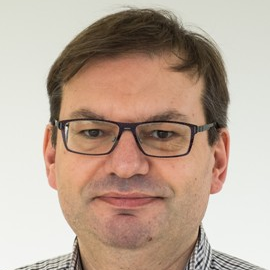Electrical Engineering for Sustainable and Renewable Energy
A special issue of Energies (ISSN 1996-1073). This special issue belongs to the section "A: Sustainable Energy".
Deadline for manuscript submissions: closed (31 May 2021) | Viewed by 69167
Special Issue Editor
Interests: electric power systems; sustainable energy; distributed generation; low-frequency electromagnetics
Special Issues, Collections and Topics in MDPI journals
Special Issue Information
Dear Colleagues,
This Special Issue of Energies focuses on the electrical engineering aspects of sustainable and renewable energies in the frame of energy transition.
Contributions on the following topics, among others, are invited:
- Renewable energy production: Wind, solar, wave, tidal energy, etc. The focus lies on electric power conversions and control (e.g., maximum power point tracking) in these systems;
- Integration of renewable power generation in power systems: Concepts, design, operation and control of (future) power systems, use of storage devices, demand-side response (for balancing renewables), etc.;
- Electrical energy efficiency in industry, buildings, transmission and distribution, etc.;
- Electrification and its role in decarbonized energy systems.
Prof. Dr. Lieven Vandevelde
Guest Editor
Manuscript Submission Information
Manuscripts should be submitted online at www.mdpi.com by registering and logging in to this website. Once you are registered, click here to go to the submission form. Manuscripts can be submitted until the deadline. All submissions that pass pre-check are peer-reviewed. Accepted papers will be published continuously in the journal (as soon as accepted) and will be listed together on the special issue website. Research articles, review articles as well as short communications are invited. For planned papers, a title and short abstract (about 100 words) can be sent to the Editorial Office for announcement on this website.
Submitted manuscripts should not have been published previously, nor be under consideration for publication elsewhere (except conference proceedings papers). All manuscripts are thoroughly refereed through a single-blind peer-review process. A guide for authors and other relevant information for submission of manuscripts is available on the Instructions for Authors page. Energies is an international peer-reviewed open access semimonthly journal published by MDPI.
Please visit the Instructions for Authors page before submitting a manuscript. The Article Processing Charge (APC) for publication in this open access journal is 2600 CHF (Swiss Francs). Submitted papers should be well formatted and use good English. Authors may use MDPI's English editing service prior to publication or during author revisions.
Keywords
- renewable and sustainable energy
- decarbonization
- electrical engineering
- electric power systems
- energy transition
- electrification
- grid integration
- demand-side response
- energy efficiency
- electric energy storage
Benefits of Publishing in a Special Issue
- Ease of navigation: Grouping papers by topic helps scholars navigate broad scope journals more efficiently.
- Greater discoverability: Special Issues support the reach and impact of scientific research. Articles in Special Issues are more discoverable and cited more frequently.
- Expansion of research network: Special Issues facilitate connections among authors, fostering scientific collaborations.
- External promotion: Articles in Special Issues are often promoted through the journal's social media, increasing their visibility.
- e-Book format: Special Issues with more than 10 articles can be published as dedicated e-books, ensuring wide and rapid dissemination.
Further information on MDPI's Special Issue policies can be found here.





